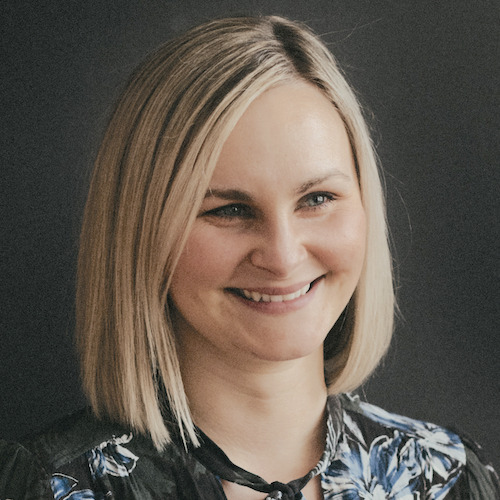
As the pandemic recedes, long-term care staffing is a desolate wasteland of tired, cynical individuals, the majority of whom may be questioning what else they can do for a living.
It’s like the closing scene of the movie “Twister,” when the people emerge from the storm shelter to find total destruction all around them, but also the calmest, bluest of skies.
Or it’s as if retirement communities had giant bubbles of protection over them in a chaotic Wild West sort of world, and now that bubble has been popped. People are emerging to find a whole new world, or at least a world that has decided to act as if the pandemic didn’t ravage senior living.
So, what now? Where does one even start?
Let’s start with the obvious: To care for residents, you must have staff to do it. And where do you find people to work in the midst of a torrential, global staffing crisis? Better yet, people who want to specifically work in senior living?
It starts with three simple things, and I guarantee that with those things, you’ll get agency staffing out of your building in a timely fashion. Take it from someone who has run a building and never used an agency for the duration of the pandemic.
Authenticity
Authenticity is the first concept.
People can feel fakeness, especially within leadership. The harsh truth is that, even as leaders, we’re barely treading water. We have nothing left to give of ourselves to our jobs, let alone our staff.
Even before the pandemic, work/life balance was an illusion. But let me tell you, if you aren’t an authentic leader, or if you can be perceived as lacking empathy and appreciation for the work that your team is doing, you’re never going to find a team that will trek to the depths of hell with you. If they can feel that you’re in it with them, and you truly try to be a vulnerable version of yourself with your direct care staff, then it will pay off in big ways for you and your organization for the long run.
This can take the form of something as simple as making rounds and joking around with your team, or bringing a Starbucks drink to the concierge staff member. It’s allowing your CNAs to tend to personal family issues without ostracizing them for calling in.
All of the little, authentic actions matter now more than ever.
Connectivity
Connectivity is the next big one.
My community is medium-sized, and when walking down the hallways, I can tell you almost every one of my CNA and nurse’s hobbies, who and what their family is like, what little special treats they want, and what goals they have when they finally leave my building. And they all know my daughter, who will run around the community with the activity team.
None of this is because I am the boss. This is the culture that has been created.
And to be honest, some of the staff probably don’t view me as their boss, only because we all play on the same playing field. Not that the residents aren’t lovely, but it is my team and the connection I have with each person that makes me want to go to work, even on the days I don’t want to. If I didn’t have the connectivity with my staff, I would have left long-term care years ago.
Connectivity has some compatibility with authenticity; your staff can feel if you want a genuine connection or if it’s forced because you need someone to pick up a shift. Some days, connecting might feel like a chore, but the payoff is immense. You’ll feel more joy going to work, they will feel joy being around you, and other members of the leadership team soon will follow. If they don’t, then they weren’t a good fit for the position in the first place.
But know this: You can’t force your leadership to want to connect with the team. It has to come from them organically. And when it does, it spreads like positive wildfire throughout the community. This is another huge reason we’ve never had agency staffing and have a very minimal number of call-ins.
Diversity
The final concept is embracing diversity.
I have a large population of staff members, both in leadership roles and on the direct care team, who are from Africa, followed by staff that are LGBTQ, some from the Middle East and some staff who are well into their 70s. From the outside looking in, we are a smorgasbord of ages, cultures, backgrounds and education levels, and we lead incredibly different personal lives. But that’s the beauty of it.
It can be so much easier to silo or shut down what makes each of us individuals. Not to mention, even talking about other cultures or demographics can be uncomfortable. But we’ve managed to embrace each person for who they actually are outside of work.
We eat food from each other’s cultures, we bring each other gifts from visiting back home, we meet each other’s significant others and we are sensitive to different cultural norms. This is not only inclusive of the staff; the residents and their families even have embraced the cultural variety that the community offers. So it melds into all facets of the organization.
The payoff
The commonality among all of these concepts is that all three take time to develop but can lead to quick results if done consistently.
Finding the energy to actually be authentic and connect can be emotionally exhausting at first, but it will pay off in the long run. Your agency staffing will diminish, because soon people begin to talk to their friends, and friends’ referrals for open positions will increase tenfold. We have zero open nurse positions at the moment, because any open spots we did have were filled by nurses texting their friends to come join us. It takes minimal recruiting effort from me or the HR director, because our staff members are doing it for us.
Rest assured, if you integrate these three things into your leadership repertoire, it will change you and your organization, and you can finally quit making that pesky phone call to the staffing agency, giving them your open shifts for the week.
Malinda Shultice, DHSc, is executive director of Cedar Ridge Village, a continuing care retirement community in West Des Moines, IA, and an adjunct instructor in the aging services management program at Des Moines Area Community College. She completed the DHSc program at the Massachusetts College of Pharmacy and Health Sciences University with the area of emphasis in education and also holds a Master of Public Administration from Drake University and a Bachelor of Science in journalism from Iowa State University. A licensed nursing home administrator, she is director at large on the Iowa Center for Assisted Living board.
Have a column idea? See our submission guidelines here.
The opinions expressed in each McKnight’s Senior Living guest column are those of the author and are not necessarily those of McKnight’s Senior Living.


